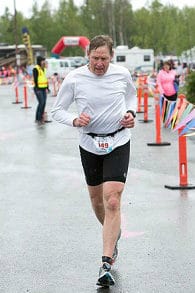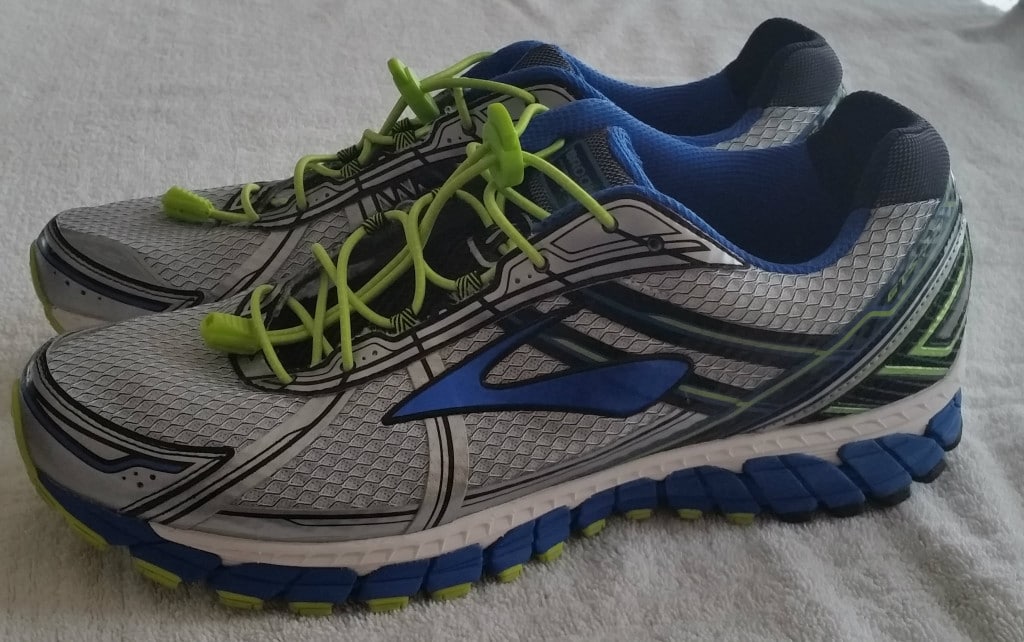How Does Choosing Running Shoes Change As We Age?

After beginning to train for my first triathlon, I purchased a pair of running shoes from a specialty running store. I was happy with the shoes and the experience. I was also pleased to have learned through this fitting that a wider shoe (2E) is a better fit for me than is a standard width.
However, after that first purchase, I started shopping for shoes online, partly for convenience. I was working full-time and did not relish shopping during the precious hours outside of work. Websites like barbieinablender.org were super helpful and I quickly began to realize that shopping online may be better than shopping in-store. You could buy a pair of shoes at the click of a button!
Online shopping allowed me to take advantage of sale prices which I was sure could not be matched by brick & mortar businesses that sold shoes. (I am now convinced that this was wrong.)
For these purchases, I used internet resources, such as the shoe finder apps and calculators on the websites of some manufacturers, to select specific brands and models of shoes.
Questioning My Process for Selecting Running Shoes
Recently, I came upon a Silver Sneakers post titled 5 Steps to Find the Right Workout Shoes. The article included some new – at least for me – suggestions for lacing and tying running shoes based on foot shape, selecting socks, and breaking in new shoes.
The author’s information was useful. However, comments from the post’s readers were even more enlightening. The author stressed the point that shoes should be comfortable. Meanwhile, the readers highlighted how often shoes did not fit properly or were uncomfortable.
I had to stop and think about how I would go about selecting my next pair of running shoes. What was the most effective way to find them? And, did my needs in a shoe change with age?
Does Age Matter? Yes & No!
I asked Kurt Decker, an avid runner and General Manager of TC Running Company, if he has observed an effect of age on shoe selection.
While, in his experience, the age of the runner is not a specific factor in choosing a running shoe, he has seen some tweaks that runners tend to make with age. The two major changes are:
- Increasing the amount of cushioning in the shoe and
- Increasing the width of the shoe; feet tend to become wider, or splay, with age and more miles of running.
“Aging is like so much in life – it’s different for each of us.”
Terry VanderWert
The Running Store Approach to Choosing Shoes
Even before reading the SilverSneakers article, I had started to question the online tools I had used for selecting shoes.
Every time I used a particular calculator, a different model of shoe would be recommended even though I had given the same answers to the questions. Besides, how could static tests of balance and bending account for dynamic movements during running?
I decided to visit the local TC Running store to experience their fitting process. When we first met, I told the salesperson, Travis, that I was doing research for a Senior Triathletes post. As a result, he was kind enough to explain the process and shoes in detail.
Step 1: Evaluating a Current Pair of Slightly Worn Running Shoes
I have read that the wear pattern on a current pair of running shoes paints a picture of the owner’s running form. Therefore, I brought along a pair of shoes that were the most worn yet still being used for running.
Travis asked if the shoes had been used exclusively or nearly always for running (which they had been) or for other non-running activities such as walking around my home or office. Running creates a unique set of movements and stresses and, therefore, wear pattern.
He pointed out that while conventional wisdom involves inspecting the heel for its wear pattern, the more important area to inspect is across the width of the shoe under the ball of the foot. The uniform wear on my shoes pointed out that I have a fairly neutral gait and foot strike. He was also able to see a small but minimal effect of asymmetry in my ankles.

Step 2: Checking My Gait Without Shoes
Before choosing a single pair of shoes, Travis had me walk with socks but no shoes across a hard surface. He observed my movement as I walked about 10 yards away from and then back to him.
From this, he selected three pairs of shoes based on the level of support he judged that I needed.
Step 3: Observing My Running Gait
Next, I tried on shoes from two manufacturers. The shoes represented two different technologies for support of the foot during running.
I did not try the third pair; I was not planning to purchase shoes that day and did not want to keep Travis from ‘paying customers’.
The first pair I tried were light gray Brooks Adrenaline 19 with GuideRail technology. GuideRails, new with this year’s models, provide support through, as the name implies, rails (rods) molded into the shoe on each side of its heel.
The second shoes, an olive green pair from New Balance, provide support through stiff foam along the edges of the shoe from the heel to middle of the arch.
I jogged about 10 yards away from and then back toward Travis in each of the pairs while he observed me. His conclusion was that both pairs appeared to provide the required support.
Both shoes were extremely comfortable and nice looking. They surely made me want to buy a pair. At the very least, I may have looked for the best deals online to satiate my curiosity! However, I refrained from the temptation since I didn’t need them yet.
Brick & Mortar or Online?
I am much more likely to purchase from a brick & mortar store like TC Running Company, that specializes in running shoes, rather than from an online store.
As near as I could tell from the discussions, the prices from TC Running are comparable to those from online sources. For the price-conscious shopper, TC Running also offers ‘last year’s’ models at discounted prices, just like the online stores.
Even if the prices were slightly higher, I would be much more confident in the selection of shoe based on a dynamic evaluation of my running form than from a static-only (at best) assessment with the online stores.
I understand why businesses choose to sell online. After all, an online store allows you to cater to shoppers who cannot browse and buy when retail locations are not traditionally open. As well as that, an ecommerce platform (visit this link to see one) can provide data and analytics about products and customers much quicker and easier than if that were to be analysed in a brick & mortar store. But for me, the actual store always wins.
If the Shoe Fits, You Will Wear It
Most runner’s shoes are selected after trying on several pairs of shoes to find a pair that provides the balance of support, fit, and comfort. The same process for determining the right shoes is used for all ages, even if the outcome in terms of the specific shoes that are selected changes with time.
Remember: Shoes that fit properly and feel comfortable when running are much more likely to get used.
Leave Your Comments and Questions Below
Where do you buy your running shoes?
How, if at all, have you found your shoes to change with age?
Please share your thoughts below.
